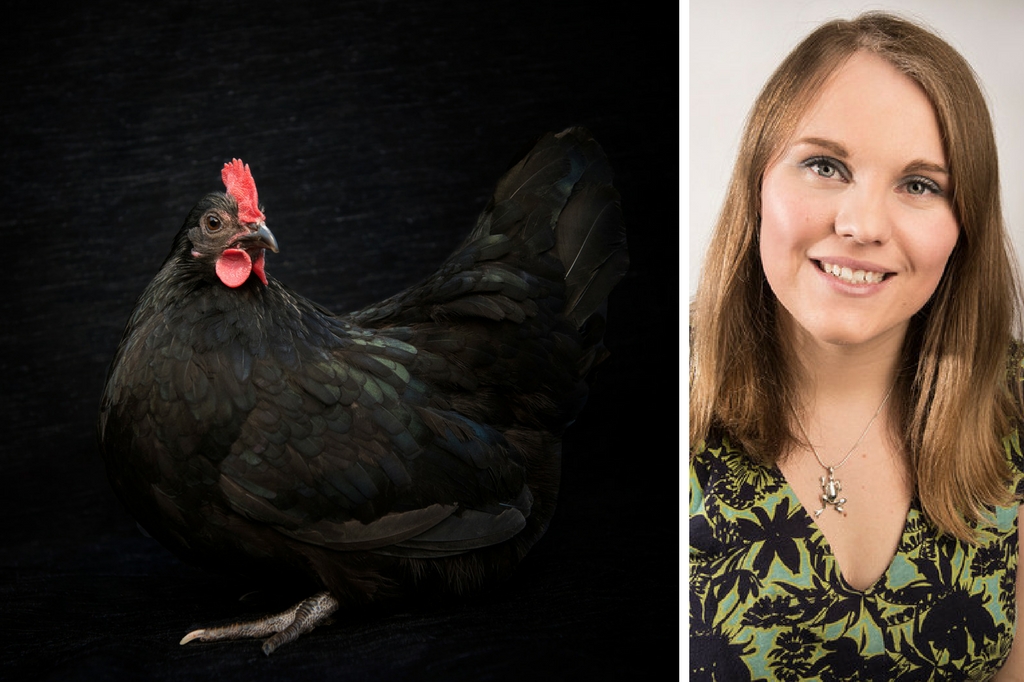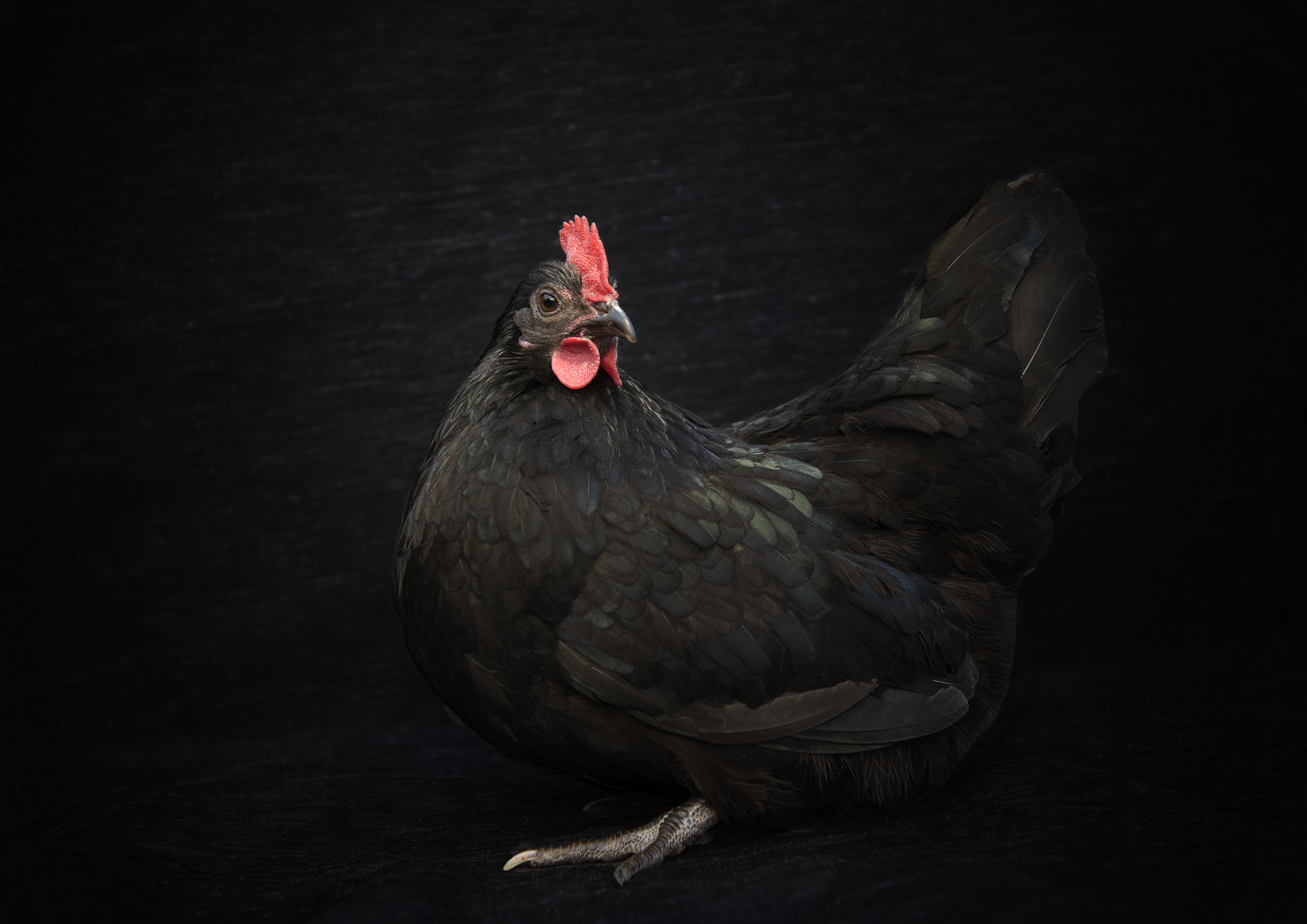Snapper Claire focuses on a brighter future for rare breed animals
Date 15.11.2017
15.11.2017
A photography graduate has focused her lens on rare breed farm animals in the hope her pictures will help to preserve their existence.
Claire Watson documented rare breed farm animals and poultry for her final year project at the University of Northampton, producing a book of her work which she hopes will encourage more farmers and small holders to consider keeping the livestock.
“As the name suggests, these animals are rare and it won’t take much for us to lose some of them forever,” said Claire. “Some of them are on the endangered list.
“Many people might ask why we should bother spending time and money to preserve these rare breeds. Well, the answer is that these farm animals are the ancestors and cornerstone of British farming and therefore deserve our respect.
“By producing my book, I hope to raise awareness of their beauty, but also their unique attributes, which will hopefully raise enthusiasm to make sure we preserve them.
“With cattle, modern breeds produce more milk and get fatter quicker, so they will always be the go-to choice for farmers. But rare breeds can have significant advantages. For example, while the rare breed Shetland cow yields less milk than a Friesian cross breed, it is hardier, needs less food and medical care.
“In 20 years there might be an increased need for Shetland cows, for example, if there’s a devastating disease affecting Friesians, or something changes in the economy – once again they could be in demand. But if we lose them, and with them their genetics, we’ll be narrowing the options available for future generations.”
Claire, who grew up on a cattle farm in the Northamptonshire village of Helmdon, believes her striking images of rare breeds will help to keep them in the public consciousness.
“My work often concentrates on the animal’s faces, capturing their gaze” said Claire, who favours shooting animals in classic portraiture style, against a dark studio background. “I wanted people to really study the faces, like they would a human portrait. I want them to see it’s not just an animal, it’s an individual creature with its own thoughts and emotions, and is an incredibly noble and beautiful animal.”
Having spent her formative years surrounded by cattle, Claire is comfortable working with animals and has a knack of getting them to accept her when she steps into an enclosure with them. But, she admits some are harder to capture on film than others.
“A particularly feisty Gloucester old spot sow gave me a bit of trouble,” said Claire. “She must have thought I had some food on me, because she chased me round the pen and my dad had to stop her in the end. But that’s an old spot: they are feisty, intelligent and are real characters. That’s exactly what I want to portray in my photos, their characters.”

Claire’s favourite photo of a Scots Dumpy bantam
Here, Claire talks about her favourite photograph, which is of a Scots Dumpy bantam hen, above.
“It is very hard to choose a favourite photograph out of my collection, but one I do like is my portrait of a Scots Dumpy Bantam hen as it was the first chicken I photographed for this project.
It was interesting to see how it was fascinated by the clicking sounds of the camera which must have sounded similar to another chicken clucking. What I like about the actual image is how the chicken emerges from the dark background and the light picks out the details of the dark feathers and some of these feathers have a green iridescence to them which looks beautiful. The bright colour of red on the chicken’s comb and wattles stand out from the rest of the dark colours in the picture, drawing the viewer’s gaze into the picture. The pose of the chicken looks very regal and dignified even though it appears in the picture to be only standing on one foot and I like how the chicken is angling its head back towards the viewer, looking directly at them with an intelligent look in its eye. I was pleased that this portrait of a simple chicken is able to convey these concepts of majesty ad intelligence, things which normally would not be associated with a chicken. I hope by seeing this portrait the public can appreciate the wonderful characteristics of this poultry and will encourage them to find out more about the breed and preserve it for future generations.
This breed of chicken has been bred in Scotland for more than 100 years. The bird is considered an ideal broody, being an excellent sitter and mother and they are a hardy breed. Similar birds with Dumpy characteristics have been shown to exist in Saxon times as early as AD 900. Legend has it that when the Roman army moved north of the border, the tribal Picts carried a type of poultry similar to today’s Dumpies as guards to warn off strangers approaching the camp. The Scots Dumpy almost disappeared in the middle of the last century, when the breed went into severe decline. Had it not been for a dedicated band of breeders in Scotland during the 1970s it could have died out completely.
There are both large and bantam varieties of chickens, with the main colours being black, cuckoo, although blues and whites are sometimes seen. This breed of chicken does not lay as many eggs as commercial battery hens do, nor do they provide that much meat, especially the Bantam variety as they are so small, but I think it would still be a shame to allow this breed to become extinct simply because it is not profitable.”
Visit Claire’s website and her rare breeds project site.